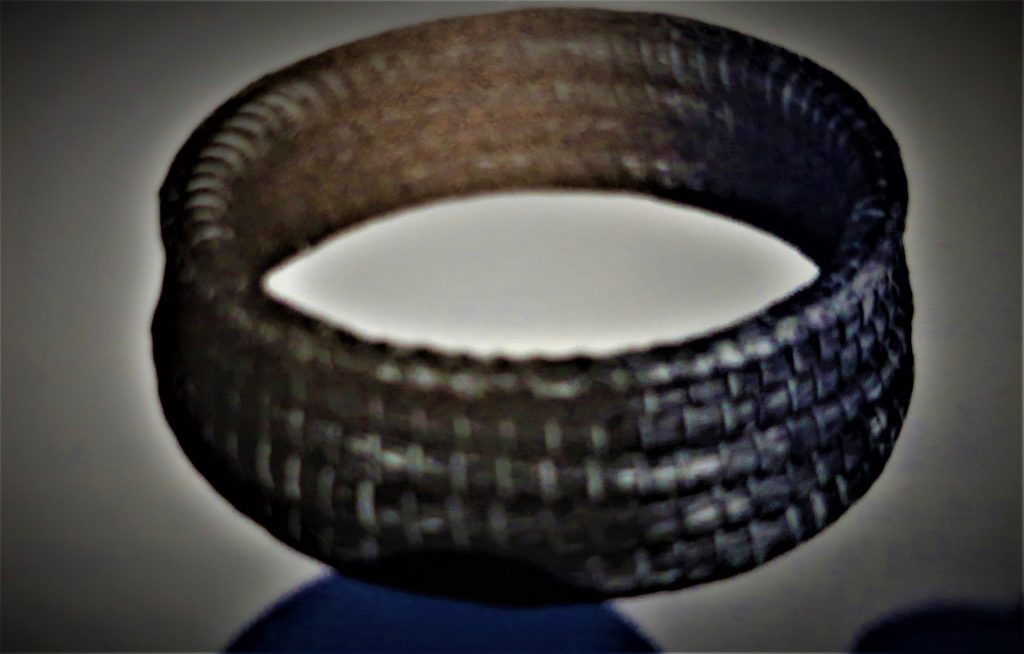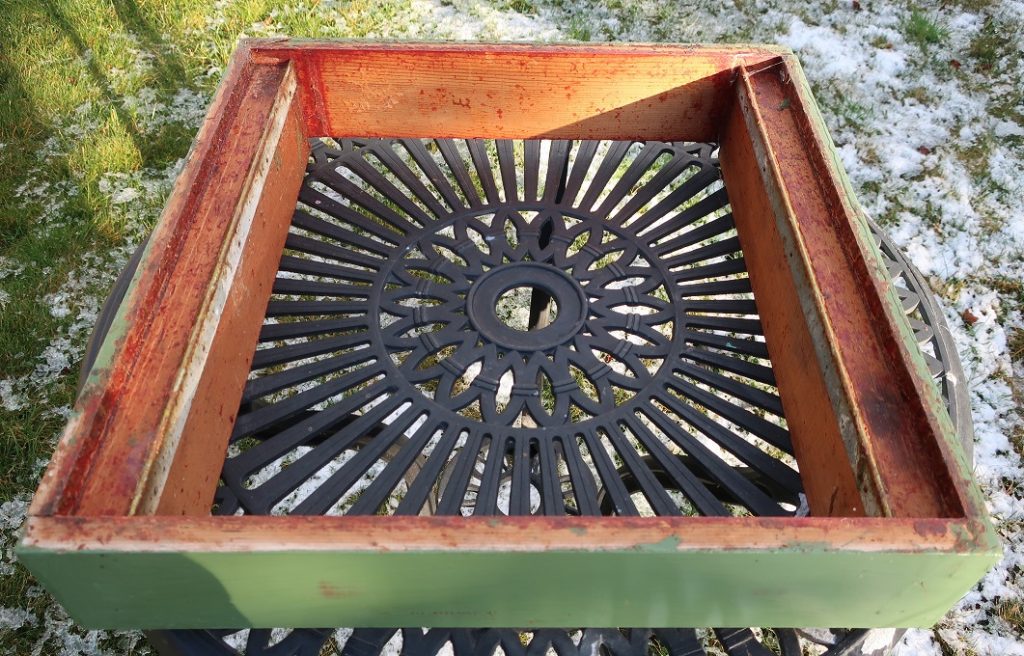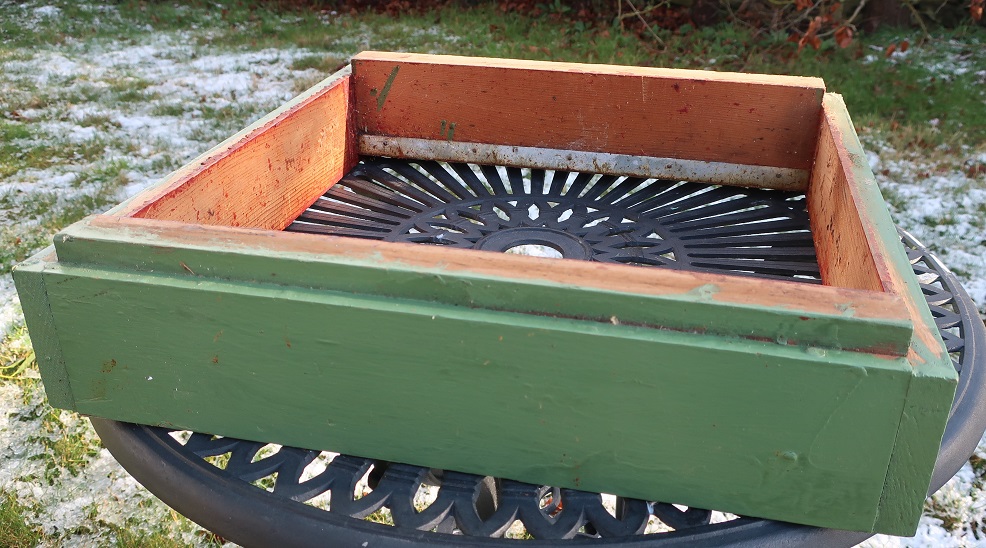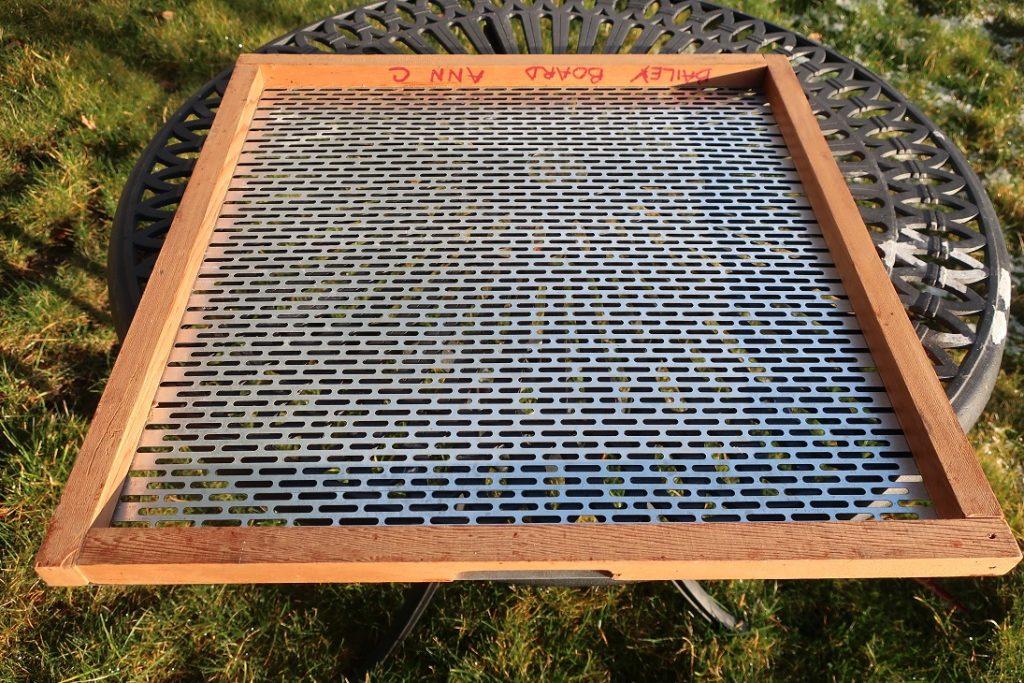
Blog News.
We’re getting closer to spring here in the Scottish Highlands but the temperatures are in small figures close to freezing. Gales are raging into early February hurling horizontally snow and sleat at anyone caught outdoors. The bees got out for lots of cleansing flights and a bit of pollen in January, and that provided some respite from long days confined indoors.
I got all the stored comb fumigated with acetic acid 80% and even managed to demonstrate the method to a class of new beekeepers in January. The area around the stack smelled like a chip shop for over a week!
Thank You.
A big thank you to all of you who donated to the upkeep of the website recently. I really appreciate your support and it means that I am also able to keep the site secure which is really important to me. You can see the lock icon to the left in the address bar indicating security. Many beekeeping websites are not secure and there is always the risk of your personal information being compromised. Insecure sites are also exposed to cyberthreats and attacks and malware which are all potentially risky.
Welcome.
Welcome to all new readers and subscribers to the free weekly blogs. Beelistener reaches 116 countries across the world now with Benin, Brazil, and Cameroon joining since the end of last year.
Ekes.

While recently researching for an article on the Bailey comb change, I kept reading about ekes. Until now, I’d dismissed the word as just another idiosyncratic British beekeeping word. What do you call the piece of equipment that you use when you need to add temporary space inside a hive?
What is it?
It’s no surprise that people may be confused by some of our British beekeeping terms, and eke is an example of such a word that seems totally out of context at first glance. My Pocket Oxford English Dictionary reminds me that is means to use something sparingly, or to make a living with difficulty. So, how can eke describe a piece of beekeeping equipment that is in common use across the world?
Well, a little further research reveals that the eke’s origins are in Old English and mean an addition or increase. This starts to make some sense when viewed in relation to straw skep beekeeping of the mid-seventeenth century when beekeepers needed some extra space during a nectar flow. They added an extension piece and you can see the straw eke or ring in the photograph that gave that required space. Interestingly, in Scotland ekes are sometimes referred to as cogs and this could be due to the round wheel-like shape of the original skep eke.

An eke is designed to give you temporary additional volume in a hive for several reasons including:
- Extension for a brood box
- Space to feed fondant/syrup above brood frames
- Space to position a tub of Apiguard varroa treatment
- As a travel screen with mesh attached to increase ventilation whilst transporting colonies
- To provide a new entrance when performing a Bailey Comb Change for hygiene reasons
- To provide space for a colony shut in during pesticide spray treatment.


Today an eke is usually make of wood and needs to have the same dimensions as the hive that you use. Unless you want an extension for a deep brood box to convert, for example, a standard National to brood box to a 14” x 12” brood box, you don’t have to worry too much about the depth of the eke because it is a temporary addition and usually placed above the brood box. There is no standard size for ekes in British beekeeping because it was not thought to be of great enough importance when standards for bee hives were being set. So. you can please yourself about the height of them taking into account the cost of material. and if the eke stays on over winter.
If you make your own eke to enlarge a brood box then the measurements must be accurate and take bee space into account, because it will be a permanent fixture as long as you work a 14” X 12” frame system. You would end up in a pickle with lots of brace comb and propolis gluing frames together if you are were not careful about measurements.
You can see my 14” x 12” eke above. About 10 years ago, I experimented with this system because I thought that it might just give the colony the extra space in the brood nest to put them off swarming, but I found that this was not the case and they just expanded to bursting/swarming point. The frames were heavy and unwieldy and became increasingly difficult for me to handle as the years progressed, so I reverted back to standard brood boxes and frames.
I am not handy with tools and woodwork but my friends are and I have homemade ekes. The one above was made by Stewart Smith and I use it to feed fondant over winter. I pack the space with old woollen jumpers or bits of blankets from charity shops. They give good insulation and can be changed easily if they become damp. They are very absorbent. I use this eke if I use Apiguard at the end of summer.

The photo above shows a Bailey eke which was also made by Stewart and has a queen excluder so that I can do a comb change and give a new entrance so that the foragers are not tramping over dirty old comb to reach the clean ones above. Later in the season, I shall tell you how I do this comb change.
When I move colonies, I use mesh travel screens that are easy to make (so I’m told) by attaching varroa floor wire mesh to a very shallow eke. They are strapped tightly over the brood box and the roof is removed for transporting the colony.

Sometimes I use a shallow super box as an eke when feeding syrup using a large contact feeder or a rapid feeder. If I had to shut bees in during pesticide spraying, I would prevent overheating by giving plenty of space and drinking water and that might involve using a shallow super or a deep brood box depending upon the size of the colony.
Coming Up.
Next week, Lisa Hay describes her adventures in From Alaska to Scotland…..


Do hope there is no eke on the winter!😀
Look forward to post of Bailey comb exchange. Association apiary has a number of hives with aged comb and considering options on how best to achieve a refresh with minimal interruption to brood growth and the season. One issue is how best to get foundation drawn out ahead of exchange in 54N.
David
Hello David. Won’t it be great when spring comes. I would change those combs by doing shook swarms just as the colonies are building up for swarming but not yet making swarm queen cells. You might even find that shaking them onto fresh new frames stops them swarming, so you can kill two birds….
I find that colonies build up very quickly after this seemingly drastic manipulation. Even if you haven’t got already drawn foundation, if you feed them at once with a rapid feeder they will draw the frames out quickly. But never forget to place a queen excluder over the floor and below the brood box just in case they take the huff and clear off.
You can always plan to produce drawn comb this season by making a swarm give you more by feeding it and removing frames as soon as they have been drawn.You can use an OSR nectar flow (if you have it) to get combs drawn out. When there is a nectar flow on the bees run out of cells to store it and have to make more wax. Feeding will do the same thing. You can have a store of drawn comb that you fumigate with 80% acetic acid so that they can be used on any colony. You can use nucs for wax production as well. I hope you have a great season.
Eke:
I’m originally from Ayrshire, but here in Canada and the rest of North America, probably, we say shim.
Hello Kenneth. Nice to have you visit the site and make a comment. Thank you. Did you keep bees in Scotland? I have read about shims in the American Bee Journal. We do all have some peculiar names for things sometimes.